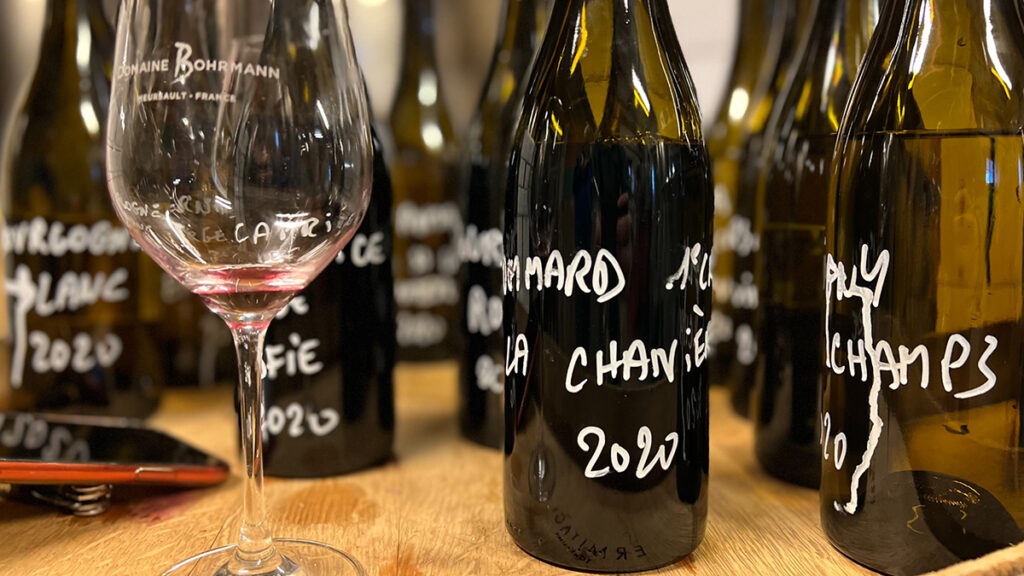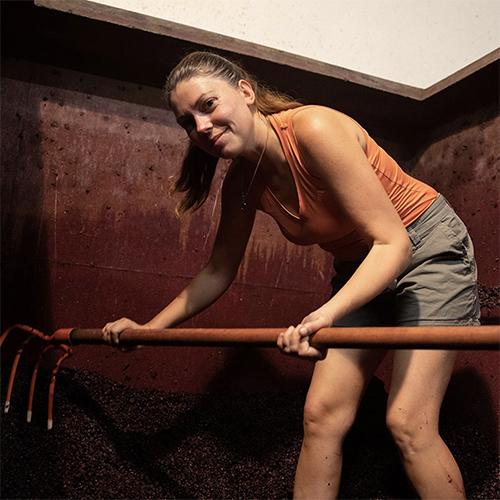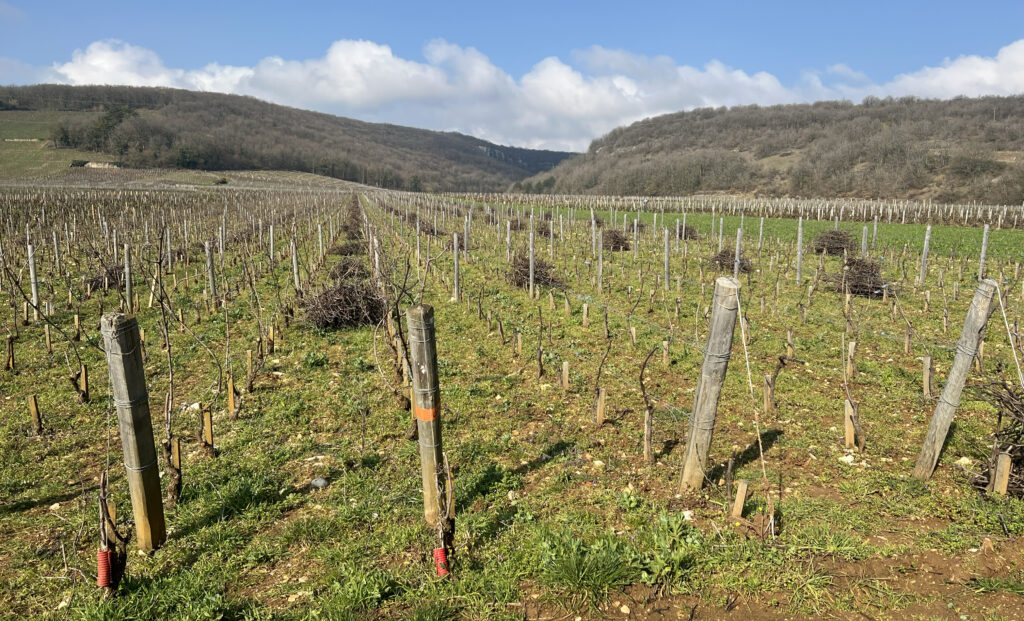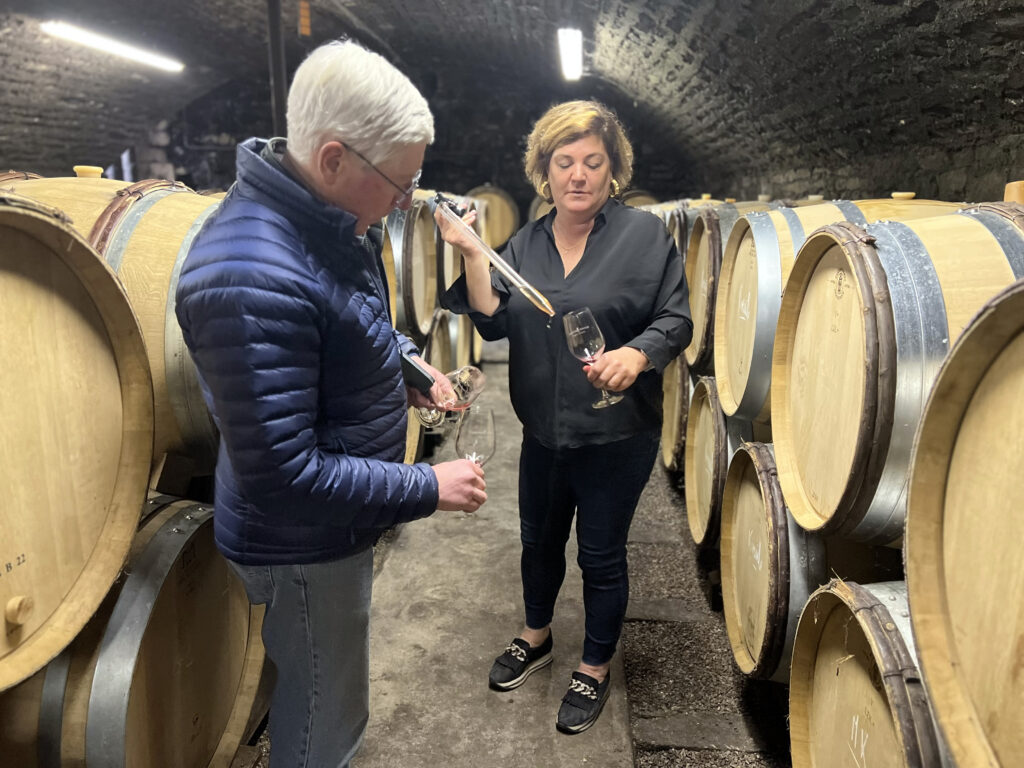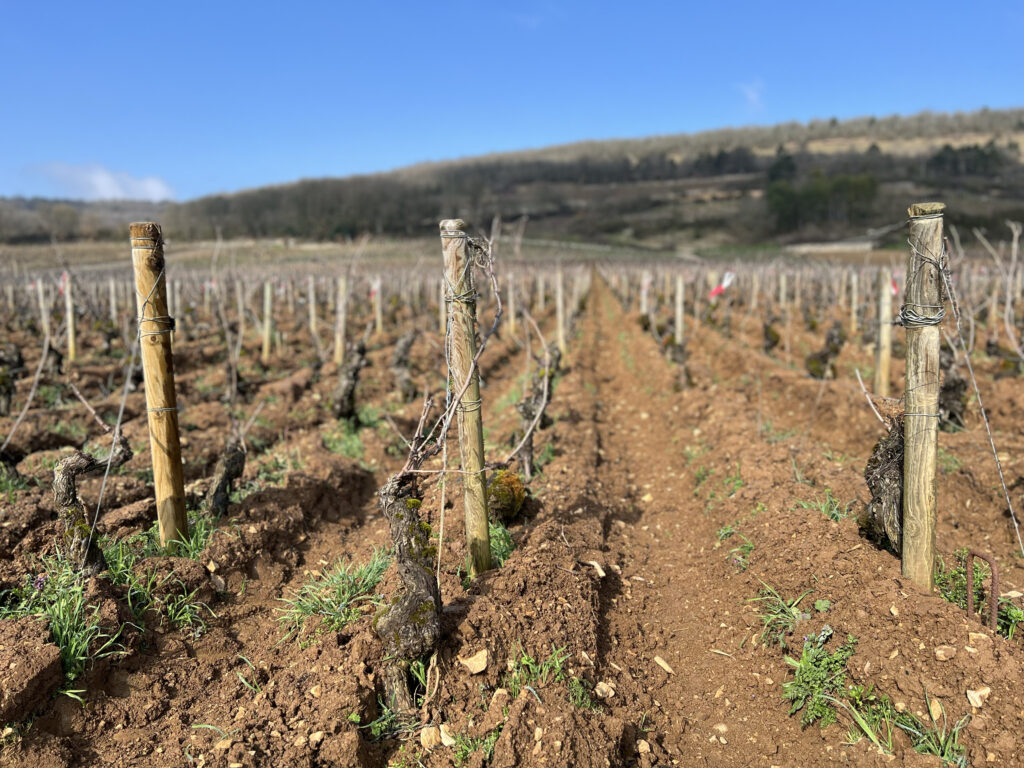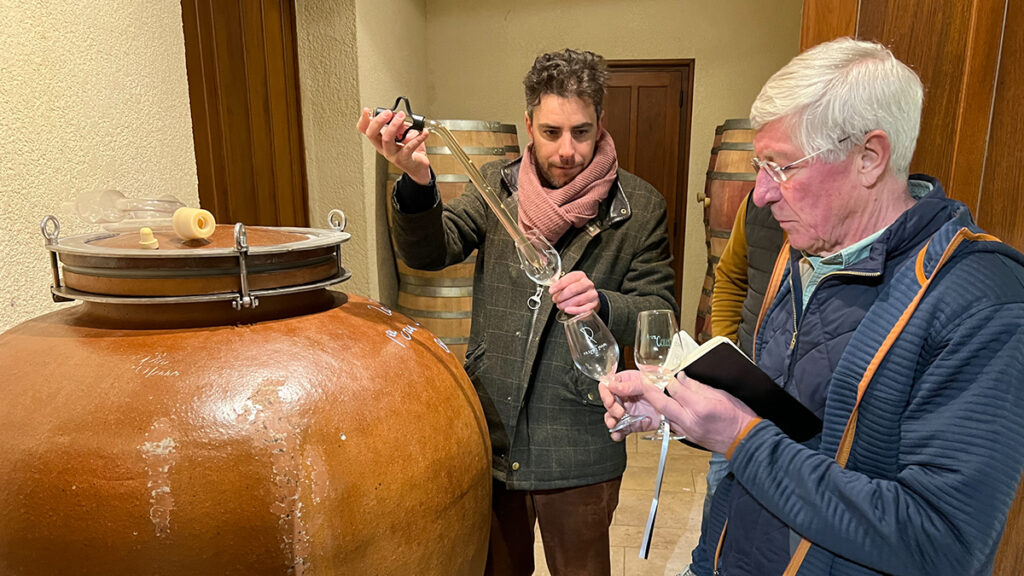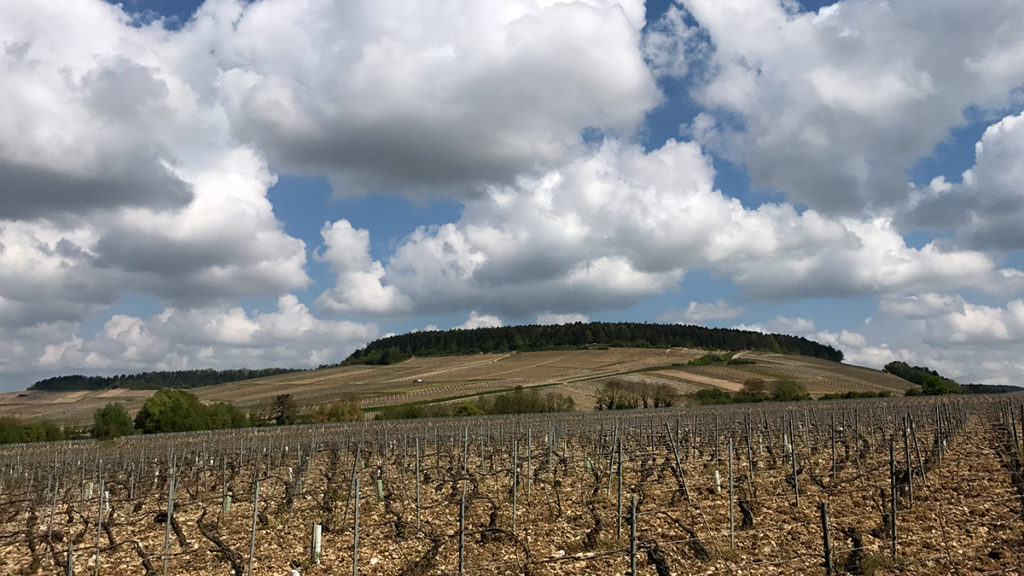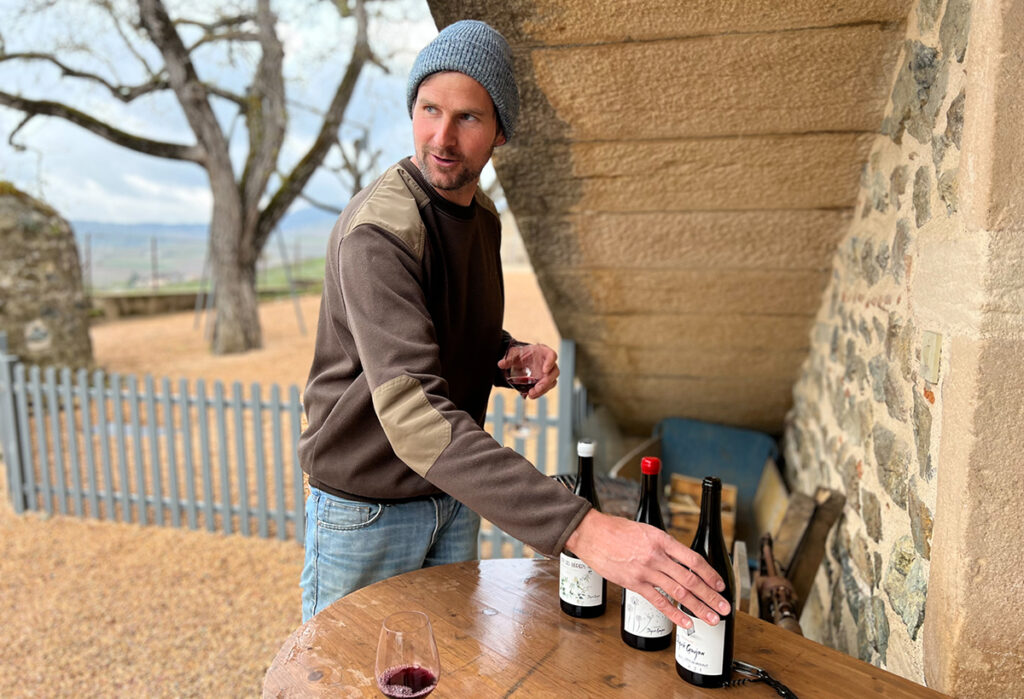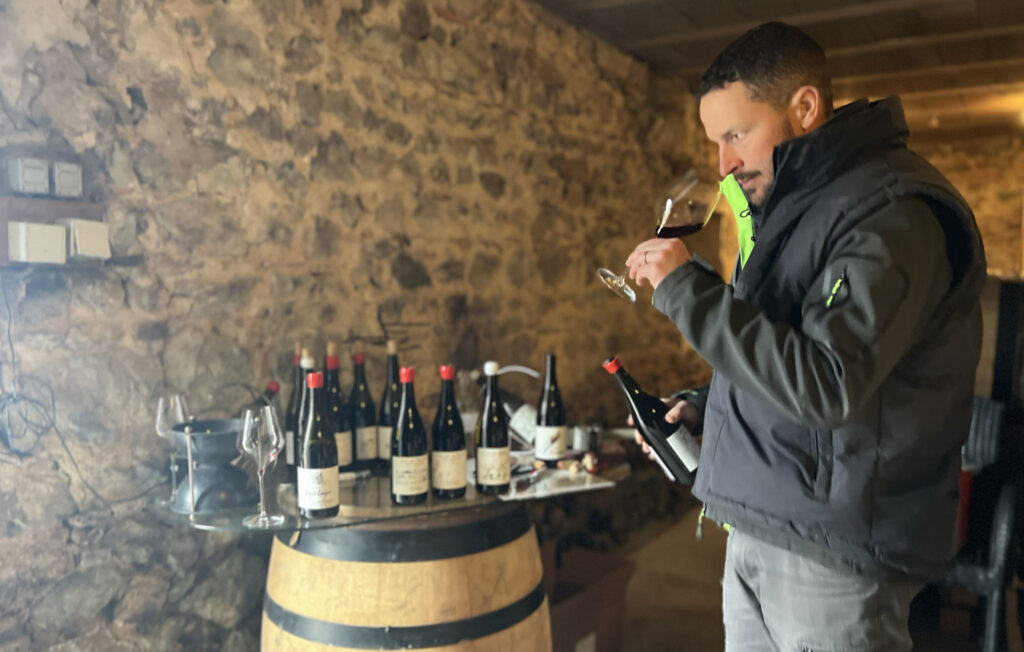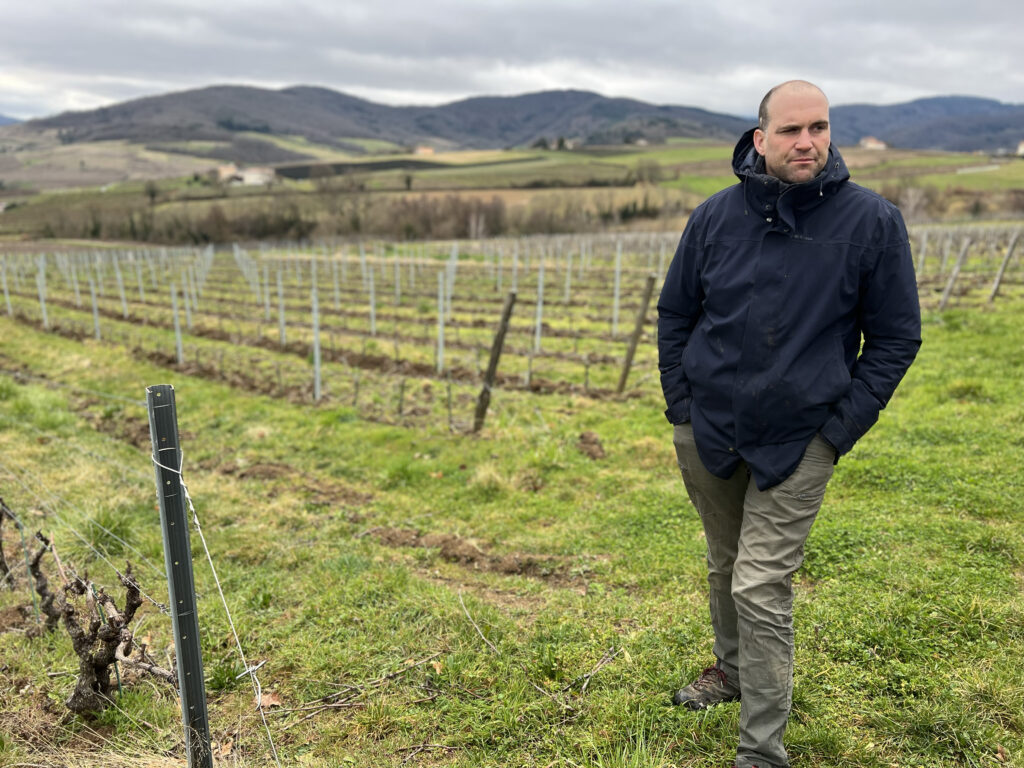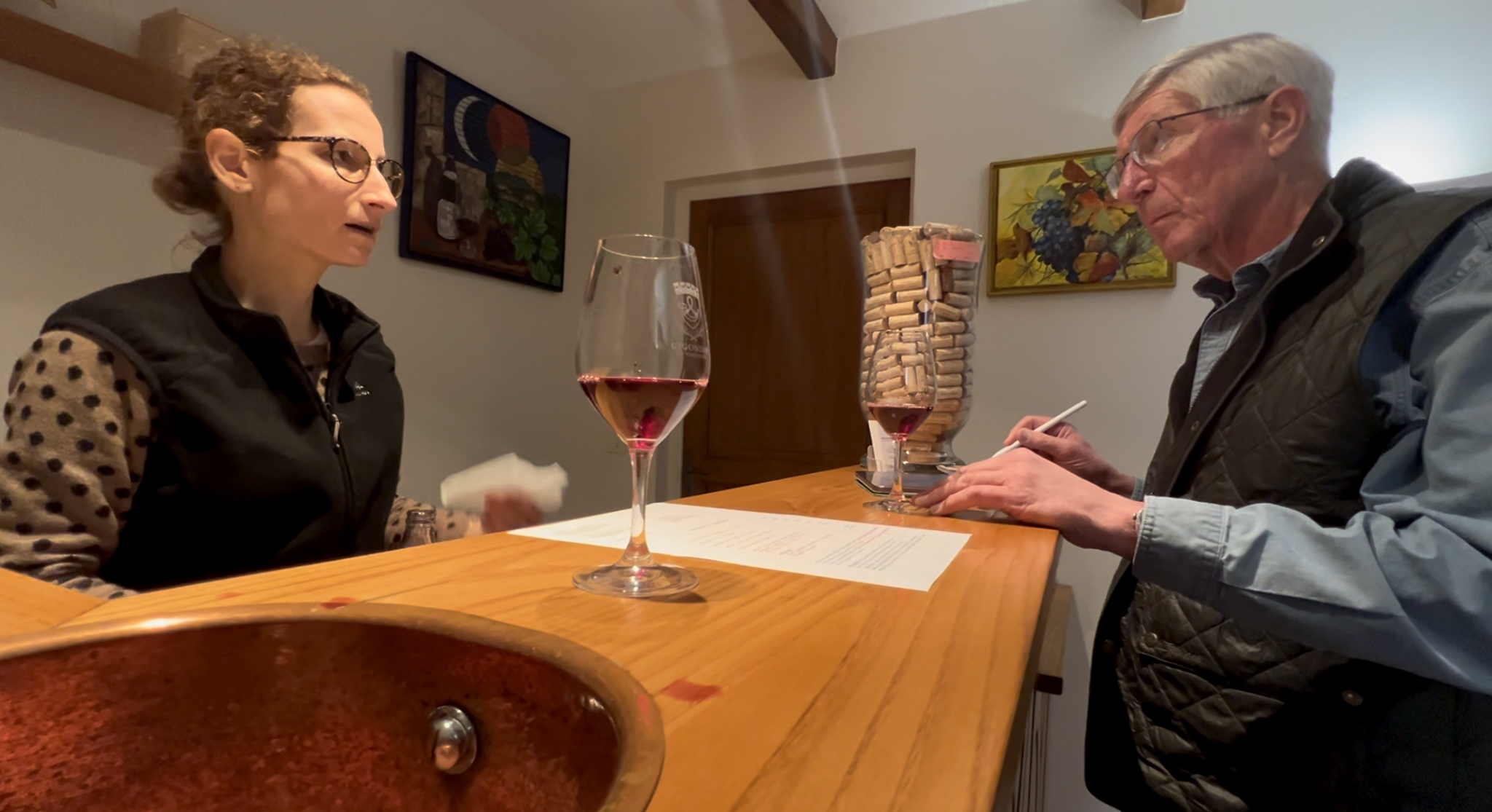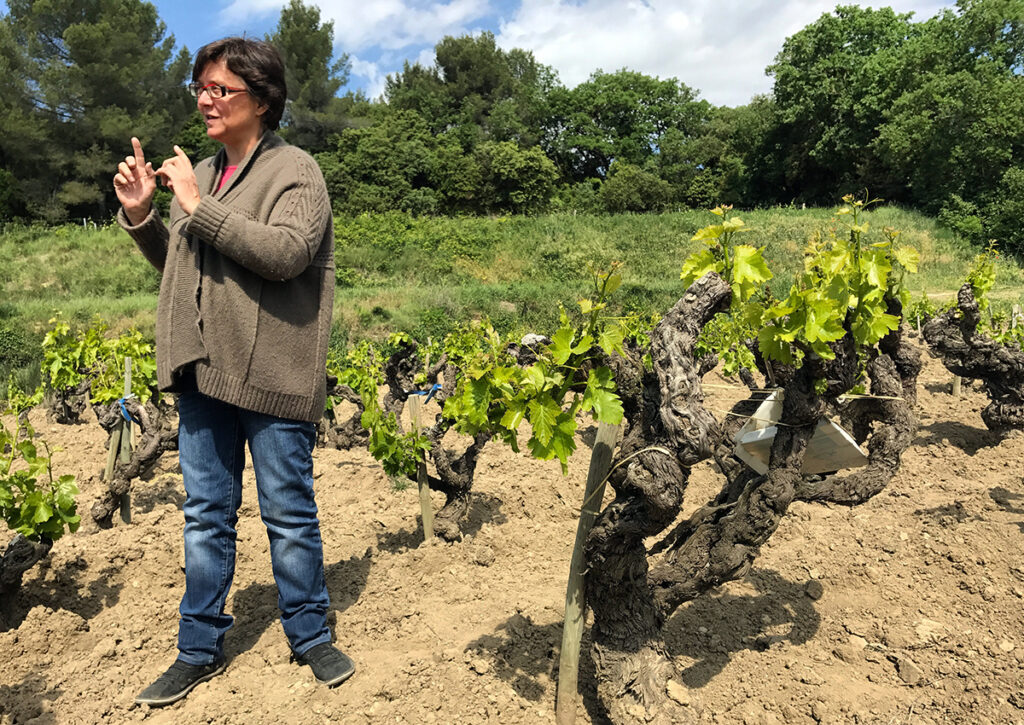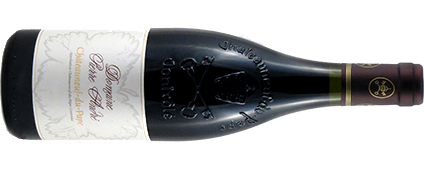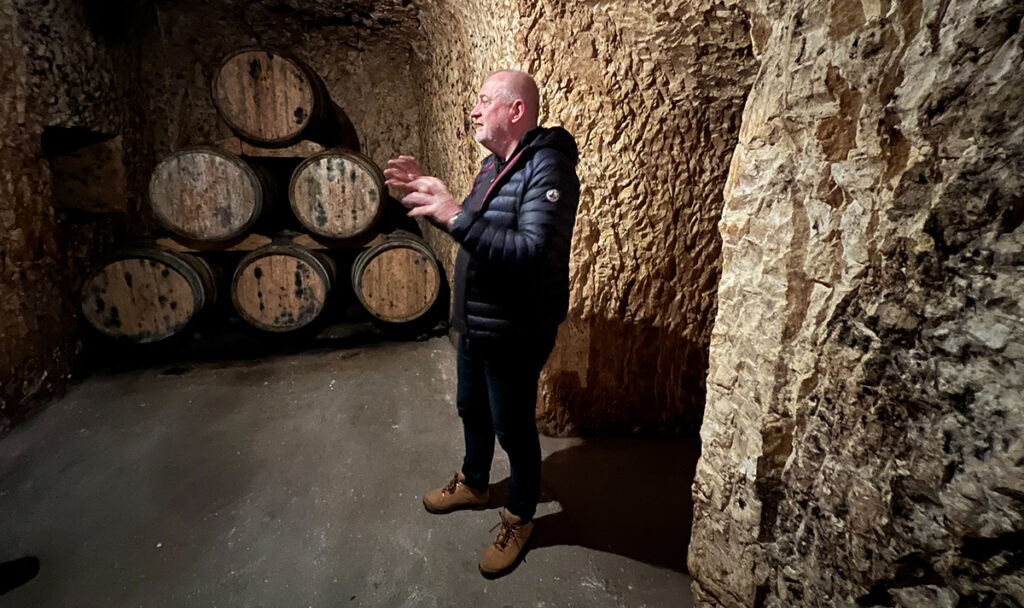France is traditionally a pretty sleepy place in August. Many shops close, and much of the country heads to the beach; it can be hard to find even a baguette. In the past this was a slow time for winemakers too, a moment of pause before the fall harvest. Here at Ansonia we’ve always done our best to emulate our French friends, and have usually taken it pretty easy in August. But times change. Warmer springs and scorching hot summers mean that harvests now often begin before the end of August. One winemaker told us he estimated his average harvest date moved three weeks over the course of his four decades of harvests. August vacations in the winemaking business are now just a week or two, and most are back in the domaine by the middle of the month to prepare for the crucial weeks to come. In our own way, we can relate. We were putting the finishing touches on July Futures mid-month when a certain tweet came across our feed and scattered our plans a bit. “Certainty” isn’t a word we plan to use much over the next few years, but the current tariff rates appear set for the moment. And so, in solidarity with our French brethren, we’re releasing our first ever “August Futures.” This issue features three Burgundy producers with an exciting lineup form the terrific 2023 vintage – reds from Clerget and Bohrmann, and whites from Bohrmann and Collet. We also make our annual visit to the Beaujolais, sourcing delicious gamay from our two sources here, with an eye for fall enjoyment. In the south we finally return to our old friends at the Domaine les Goubert, and visit Pierre André for exquisite biodynamic Chateauneuf-du-Pape. There’s also sub-$20 Pouilly-Fumé, and excellent handmade grower Champagne from Lancelot-Royer. As always, our goal is to propose wines for every taste and budget, and we hope you’ll find something of interest. If you do, please be sure to submit your orders, in case or half-case lots, by the Order Deadline of Sunday, August 17, 2025. We will place orders for the wine immediately thereafter. JUMP TO PRODUCER
Clerget
Bohrmann
Collet
Beaujolais
Goubert
André
Michot
Lancelot-Royer
August Futures
Order Deadline: 8/17
Domaine Christian Clerget
Vougeot, Burgundy
Justine Clerget now runs her tiny family estate in Vougeot. Since her arrival she’s introduced organic viticulture, refined extraction, and added some whole cluster fermentation. The resulting wines are superb modern Burgundies, full and long with excellent detail and perfect balance. If this is what the Burgundy of the future tastes like, sign us up. Like many of her neighbors, Clerget had a disastrous 2024 growing season full of torrential rains, mildew, and poor flowering. The resulting crop from their already tiny domaine was “basically nothing,” she told us. Indeed it’s been a while since we’ve seen a quarter-barrel (75 bottles’ worth) that represents the entire yield of one plot. As such Justine has asked us to take our 2023 allocation over the next two years, and has supplemented it with some leftover 2022s to fill in the gaps. It’s not often you get another shot at a terrific vintage like 2022 in Burgundy, so we’ve jumped at the chance. We’re delighted to re-offer three 2022s, as well as a new 2023. First Clerget’s Bourgogne Rouge 2022 – grown from 40+ year old vines in the communes of Vougeot and Vosne, this is punchy, delicious red Burgundy with the signature Clerget elegance. There’s remarkable intensity of fruit – particularly for a wine of its level – with notes of raspberry jam and a touch of earth. Burghound named it a “top value” Bourgogne, calling it “delicious” and “velvet-textured.” Jasper Morris writes: “the fruit is attractive and quite succulent… all in balance.” This is everything you want in a Bourgogne rouge, and nothing you don’t – this sold out quickly last year, and we expect it to again. We’re also re-offering the 2022 village-level Chambolle-Musigny, a blend from six different plots around the town. This shows the town’s classic silky, seductive nature, and has blown people away at tastings over the last year. Neal Martin gave 90-92 points, praising its “sense of vibrancy and tension” on a “very well-controlled and persistent finish,” concluding “this is worth seeking out.” This is a wine of perfume, elegance, and grace, but with real density from the hot, dry summer – we think it punches above its village weight. Clerget’s Chambolle 1er cru “Les Charmes” is appropriately named, and it simply sings in 2023 – a charming, classically Chambolle wine with a terrific dose of depth and intensity. The nose shows deep, perfumed notes of cloves and cassis; the mouth is long and firmly built but with exceptional lift at the end, unmistakably a premier cru. Jasper Morris awarded 91-93, finding “Quite a classy fresh red berry fruit, not too soft, with good energy behind.” We’d give this 2-4 years in the cellar if you can stand the wait. Finally, Echezeaux, the legendary Grand Cru. Clerget’s vines here were planted in 1947, and the resulting wine is every bit a Grand Cru, worthy of reverence and some patience. Particularly in 2022 this is big, powerful wine, with smooth inky fruit resting on broad shoulders. Jasper Morris (93-95 points) called it “a charming and graceful Echezeaux;” Neal Martin suggested a drinking window of 2028-2045, finding it “beautifully defined, with lifted brambly red fruit, sous bois, and incense.” It’s hard to call a $200 bottle a deal with a straight face, but particularly at the premier cru and grand cru levels Clerget’s wines are priced well below their peers. If you’ve got the budget and the cellar space, this is a special wine.
Domaine Bohrmann
Meursault, Burgundy
As we sat down with Sofie Bohrmann in March to taste her 2023s, we learned that the domaine had just celebrated a milestone: Dmitri Blanc’s twentieth year as her principal winemaker. Dmitri is indeed an important reason for the success of the domaine. Dmitri and Sofie make an excellent team, and their wines seem to get better every time we visit. Sofie’s white Burgundies are among the most popular in our store, and often come in at a serious discount to the market. This year we were taken with several of her reds, and so have included them too. Bohrmann’s Bourgogne Côte d’Or Blanc “Les Belles Goutes” is a core presence in many of our customer’s cellars, priced for regular drinking but showing the fine quality of Chardonnay from the Côte d’Or. The vines are from Meursault, and some of the storied village’s opulence seems to find its way into the glass. With alcohol at 13% in the 2023 vintage, the wine is generous, and its rich lemon curd fruit benefits from just the right amount of oak. You can pour a glass of this wine for anyone and serve it with any meal, knowing that it will show well. There is often value to be found as one moves to the villages up the side valleys from the main slope of the Côte d’Or. Not long ago Sofie purchased the Clos Sous le Chateau, a small monopole in St. Romain, which is perched at the very top of the valley that runs west from Meursault. The 2023 vintage of this wine is excellent, with its elevation providing fine definition and energy. The nose has the precision of a Puligny, and in the mouth there is good concentration. Its persistence on the palate signals a wine that will mature gracefully. The side valley between Chassagne and Puligny holds the better-known town of St. Aubin, and the Domaine owns a parcel there in the celebrated premier cru “En Remilly.” The 2023 vintage is an elegant wine with excellent length. Sofie’s signature compact yellow fruit is here in spades, balanced expertly with the stoniness for which St-Aubin is known. This is classic dry St. Aubin, with floral notes in play alongside the concentrated ripe fruit. From the “big three” towns, both Bohrmann’s Meursault “Les Vireuils” and her Puligny-Montrachet “Les Grands Champs” are particularly delicious this year. Les Vireuils is all richness and roundness – classic Meursault mouthfeel – with a deft touch of oak and enough supporting acidity to carry the wine for a number of years. This is beautifully channeled Meursault – not as big and buttery as at some domaines, but with all the power wrapped in a sophisticated package. Most Burgundy aficionados consider Puligny the pinnacle of white Burgundy – a perfect blend of fruit and stone and wood. Sofie’s “Les Grands Champs” is unmistakable Puligny, and is certainly her most elegant wine. Like all good Puligny, will take a bit of time to integrate fully; but the 2023 is likely to be precocious for the appellation. Look for white flowers, lime zest, and stones on a very long, classy finish. As for red, once again we heartily endorse Bohrmann’s Bourgogne Rouge, from old vines near Pommard. The 2023 is just lovely, with expressive sweet fruit in the nose. In the mouth, there are wild strawberries, or perhaps ripe red cherries. There is good structure, with nicely ripe tannins that should carry the wine for a number of years. In Pommard proper, Sofie owns a special, tiny plot of village level vines planted in 1906. These ancient vines produce inky, deeply colored wines with tons of character. The 2023 is terrific, with the nose showing notes of plum jam and blueberry pie; the mouth is compact and sturdy with notes of cherry skins, black pepper, and cocoa powder. This should age magnificently but it was difficult to spit out at our tasting in March and we think it will be lovely by Christmas. Finally all the way up in Gevrey-Chambertin lies “Les Seuvrées,” a village-level Gevrey to which Sofie brings her signature restraint and class. It’s her only Côte de Nuits property, but her style of clean fruit and restrained oaking works beautifully with the rugged, muscly terroir of Gevrey. The nose is floral and inky with notes of dried roses, gingerbread, and cassis. The mouth is powerful and delicious, with perfectly coated tannins and a gorgeous, satisfying freshness sometimes lacking in Gevrey. This was the wine we discovered on a wine list in Beaune that brought us to the domaine – pour yourself a glass and you’ll see why.
Domaine Jean Collet
Chablis, Burgundy
Since its beginnings 70 years ago, the Domaine Jean Collet has grown steadily, both by acquisition and marriage, adding plots across the many terroirs of Chablis. Remarkably, there are now more than 35 acres in the various subdivisions of the Left Bank complexes of Vaillons and Montmains, along with many Right Bank parcels of note. The Domaine is run these days by Romain Collet, the energetic and talented grandson of Jean Collet, the founder. He experiments with all of today’s means of elevage, so a visitor to the cellars now walks past not only stainless steel tanks and large oak foudres, but also cement eggs, clay amphoras, and barrels of all sizes, from traditional Burgundian to demi-muids holding 400 or 500 liters. Romain skillfully matches the new and old techniques with the various terroirs, crafting delicious and varied wines with much character. The result is a wide selection, in which something can be found to please every palate. At the village level this year, we suggest a new cuvée, from terroir that lies alongside the premier crus on the slope collectively known as “Vaillons.” With just a few months in the bottle, Valvan 2023 is already eminently drinkable, plentifully fresh and expressive. Its 60 year old vines provide plenty of stuffing, but dry and lively as a Chablis should be. Jasper Morris praised its “attractively chiselled white fruit, fresh lemons and a crunchy finish.” The village-level designation contributes an attractive price. On the parallel ridge that holds Montmains and its subsidiary terroirs, Romain separately bottles two very attractive premier crus. The first is “Forêts” (described as “Forest” in Dauvissat’s famous cuvée from the same place). Morris praises the “rich character to the fruit in Forêts wines,” perhaps due to the variety of clay in its soils, which he says hold the heat and render a “softer, deeper and harmonious La Forêt” compared to Montmains’ typically “lean, steely, and saline” character. We liked the balance of freshness and gras in the 2023, and we agree with Morris’s prediction that it will develop well. It shows great dry extract and classical bitter grapeskin quality notes. Our other choice along the Montmains ridge is “Butteaux,” just up the hill from Forêts. This ground is just a bit cooler, contributing more briskness and just enough fat. Butteaux 2023 began its elevage in tank and finished in older Burgundian barrels. As between these two Montmains siblings, Forêts offers a bit more richness, Butteaux a bit more steely energy and salinity. The mouth is very dry and tense, with less fruit than Forêts. In some years this approaches a Côte d’Or white; this year Collet has dialed the oak way down, and it’s almost imperceptible. You won’t go wrong with either cuvée. On the right bank, we recommend a celebrated premier cru that lies just upstream along the Seurin from all the Grands Crus: Montée de Tonnerre. Many put this vineyard at the top of the region’s premier crus – Rajat Parr writes that it “produces at Grand Cru status, but still goes for Premier Cru prices.” Jasper Morris notes that “white clay with plenty of stones lend it some Left Bank minerality, but the superb exposure of the hillside allows the Right Bank richness of fruit to dominate.” We think Collet’s 2023 Montée de Tonnerre shows the completeness for which the vineyard is famous. There’s enough freshness but also enough meatiness, and the length on the palate marks it out as haut de gamme. The Grand Crus of Chablis are the best-priced Grand Cru Burgundy in existence, so if you’re curious about the category, here is a good place to start. For 50 years the Collets have owned vines in Valmur, the largest of Chablis’s Grand Crus, and their 2023 is a typical example. There is a subtle nose of lemon fruit (or maybe Verbena, with its soupçon of herb to join the lemony scent), and enough body and length to put the wine a solid notch above a good premier cru. Jasper Morris found “ripe orchard and plum fruit, plenty of generosity” in the 2023. If you’re a regular buyer of Chablis Grand Cru, you’ll find this an excellent one; if you’re having your first look at grand cru, it’s a good place to start.
Dupré-Goujon & Frederic Berne
Côte de Brouilly / Lantigné, Beaujolais
Sébastien Dupré and Guillaume Goujon’s superb cuvées of Beaujolais from the 2022 vintage are like no other Beaujolais you have tasted, unless you were lucky enough to taste the same wines from 2020. They offer a beautiful combination of density, complexity and persistence that more resembles the reds of the Côte d’Or more than any other wines made from Gamay. These are exceptionally interesting, ageworthy wines that will please upon arrival but will also improve for five years or more. The growing season 2022 was exceptionally hot and dry, but their vines did not suffer excessive heat stress, and they were able to bring in grapes with full phenolic ripeness but potential alcohol in the range of only 12.5% to 13%. As a result, the wines are nicely ripe, yet also show impressive elegance and finesse. Cuvée 6-3-1 is a blend of their three plots, readily drinkable but deceptively sophisticated. We loved its expressive nose of dark, ripe fruit – violets and cassis, with a croquant (crackling) texture. Kenna Wells, the Wine Advocate’s reviewer, found “a packed palate with notes of stewed cherries complemented by spice, white pepper, and charred wood.” James Suckling praised its “striking elegance” and “fine tannins,” and we agree with the critics that the wine is far more than a summer sipper. It will grace your table all year round. Héronde is their largest parcel, on the slope just below the winery, where the dense grass growing between the rows reminds us that theirs is organic viticulture. Elevage was ⅓ in cement vats, ⅓ in demi-muids (500L barrels), and ⅓ in barrique (225L barrels). Sebastien explained to us that it is a delicate business to use barrels to raise Gamay, and that they employ them to enrobe the tannins, not to add to their prominence. In the glass, Heronde 2022 is indeed a serious wine, and already particularly attractive. Floral notes of violets mingle with the ripe fruit, and the wine fills the mouth despite its relatively low alcohol. Kenna Wells found the wine to “unfold with concentrâted aromas of dark berries, dried rose petals, licorice, sous-bois and smoke;” James Suckling praised its “great wild-herb intensity.” Like Wells, we are impressed by its “lasting impression of poise and finesse.” Pavé is a smaller parcel than Héronde, but in 2022 the wine is just as successful. Its interplay of red and black berry fruit, minerals, and earth well justifies the presence of a musical score on its label. The many elements play against each other across a broad, persistent palate. Elevage for this wine was mostly en cuve, with a small part in demi-muids, so there is barely any sense of oak. Overall, there is a lacy character to the tannins and a glass of this wine will pair beautifully with many fine dishes. Look for notes of peony, chalk and wild cherries. Suckling’s reviewer writes: “A hypnotically beautiful Cote-de-Brouilly. Mouth-filling red and black berries are almost perfectly interwoven with concentrated fine tannins on the medium-bodied palate. Expands dramatically in the extremely long finish without losing its delicacy or precision. And even these words don’t quite grasp what makes this wine so great.” Like Héronde, this wine can be expected to develop beautifully in the coming years. Beaujolais blanc is offered by some but not all winemakers in the region. Dupré-Goujon bought some Chardonnay vines in 2019, and in the last few years has made a beaujolais blanc that is strikingly good. Raised half in tank and half in wood, the Clos des Muriers 2023 has beautiful balance: just a touch of oak, good freshness and an attractive weight. Suckling’s reviewer effuses: “Not only is this the first great chardonnay from Beaujolais we’ve encountered, but it is also an incredibly joyful expression of the grape, brimming with stone-fruit, lemon-curd and white-flower aromas. The super-elegant, medium-bodied palate has breathtaking purity and precision. Great energy in the very long, chalky finish.” FREDERIC BERNE. About 20 minutes up the road from the Domaine Dupré-Goujon, Frederic Berne is another young Beaujolais producer who brings energy and innovation to his winemaking. Like Dupré and Goujon, he is committed to organic and biodynamic viticulture, careful stewardship of his vines and of the biodiversity of his terroir. In style, Berne’s wines are more like classic Beaujolais: dominated by their fruit and offering immediate pleasure. We have three to recommend. Berne’s Beaujolais-Lantignié Pierre Bleu 2023 was bottled in mid-2024 after a relatively short elevage en cuve. It features lovely Gamay fruit in a lighter wrapper, perfect to provide refreshment on a warm day. It has put on some weight with a year in the bottle, so the texture and mouthfeel are particularly nice these days. With an alcohol level at just 12.5%, it can be the perfect choice to pair with something off the grill. This is wine for quenching thirst – a vin de soif, the French say, and it should be served a little cool. Berne makes several wines from the ten Cru Beaujolais towns, and we’ve chosen two. Régnié is lighter and slightly more rugged, with that crunchy, bonvivant character you often find in the Beaujolais. It’s got more intensity than the Lantigné, but it doesn’t take itself too seriously. The nose is deep red and bursting with cherries and a hint of lavender. The mouth is fresh and concentrated, and just calls for a burger. Neal Martin found “fleshy, fluid tannins and a keen line of acidity,” concluding, “this is a delightful Régnié.” Our other suggestion from Berne is a more serious wine, his Morgon “Corcellette” 2023. The fruit is darker here, and the wine has a good deal more body. There’s more going in the nose, with a floral touch joining the fruit, and the wine persists well on the palate. Suckling’s reviewer writes “Ripe and powerful but also elegant, this has excellent mineral freshness and a graceful personality that’s hard not to like.” It will be a good wine to turn to as summer changes to fall. Indeed, it will likely be a very nice match for your Thanksgiving turkey this year.
BEAUJOLAIS Dupré-Goujon Côte de Brouilly “631” 2022: $325 Berne Beaujolais-Lantigné “Pierre Bleu” 2023: $250
(case prices)
Dupré-Goujon Côte de Brouilly “Pavé” 2022: $375
Dupré-Goujon Côte de Brouilly “Heronde” 2022: $375
Dupré-Goujon Beaujolais blanc “Muriers” 2023: $325
Berne Régnié 2023: $295
Berne Morgon 2023: $295
Domaine les Goubert
Gigondas, Rhône
It’s been a while (too long!) since we imported from the Domaine les Goubert – their bottling schedule and our importing schedule hasn’t seemed to sync up recently. But we’re pleased to offer four wines this year, all of which will find happy homes in your cellars (and ours). Florence Cartier continues to steer her family’s domaine with a calm, thoughtful hand, producing traditional southern Rhône cuvées in the best sense of the term. They’re distinct in style from many of our low-intervention Southern Rhône sources – Joncuas, André, Malmont, to name a few. Goubert’s wines are clean and consistent, comfortingly old-school in character and taste. Florence’s 2023 Côtes du Rhône is delightful. It’s unoaked, low-alcohol, middleweight, and very refreshing, with the spirit of a Cru Beaujolais or a Loire Valley cab franc. It’s a blend of Grenache, Syrah, Carginan, and an unusual local grape called Brun Argenté or Vaccarèse. In some vintages it’s a burly, rustic red with rugged fruit and bold tannin – this year it’s summerweight, with less extraction and gentler tannin. Look for notes of strawberry and garrigue, and serve outdoors with pizza – a useful, tasty vin de soif. Goubert’s Beaumes de Venise rouge has quickly become one of our favorite cuvées in recent years, and the 2023 is the best yet. It’s a grenache-syrah-mourvedre blend from a single vineyard plot. The town is best known for its sweet dessert wine from Muscat, but this terroir is well suited to red. The nose is deep and floral with beautiful violet and lavender notes, and hints of plum jam. The mouth is smooth and rich with excellent freshness and a delicate stoniness inlaid among the abundant strawberry and raspberry fruit. The balance is impeccable, and the texture perfectly suited to the fruit. It’s hard to imagine a more impressive red under $20. Florence’s flagship wine is of course from Gigondas, home to her family domaine and most of their vines. Her 2021 Gigondas is a story of both vintage and varietal – as in the north, the growing season was cooler and wetter than is typical, and there’s more lift and delicacy than usual in this cuvée. The rainy spring also meant a poor flowering for grenache and syrah, and so Mouvrèdre plays an unusually central role in this year’s blend, adding charming, rugged savory notes of garrigue and leather to the lush fruit. With less extraction it’s also more pleasant young, and we expect this to be delightful from the start. Look for notes of cassis, blackberry and dried roses, and enjoy the delicacy of a low-alcohol (13.5%) southern Rhône red. Think of it like a summer sweater – not a t-shirt or a down jacket, but a layer to take the chill off when an September evening turns cool.
Domaine Pierre André
Châteauneuf-du-Pape, Southern Rhône Valley
Our visit to the Domaine Pierre André this year was a sad one, coming just a few months after Jacqueline Andre died of a sudden illness. Her father was a pioneer in organic viticulture, having decided in 1965 that chemicals were bad for his vines and having abandoning all of them altogether. Jacqueline was proud to have inherited and to tend vines that were up to 145 years old. She called the oldest ones her “grand dames,” and propped them up with stakes as they came to need them, with her care they continued to contribute to the domaine’s superb red wine. The domaine was certified organic in the early nineteen eighties – among the first anywhere – and for many decades Jacqueline quietly carried on her family’s great tradition. The 2022 vintage of her red Chateauneuf du Pape is the last that she saw all the way through to bottling, and no surprise, it is gorgeous. Like a few other great winemakers of her era, Jacqueline made a single cuvée of red wine, blending in all the wine from patches of terroir across the appellation. The 2022 is a very fine vintage among many great ones. As always, the nose is expressive, showing the wild strawberry fruit of the dominant Grenache, as well as floral nortes of violet and maybe a touch of licorice. The weight is medium, with just enough structure and an exceptionally long finish that completes this strikingly elegant wine. We’ll be putting bottles into our own cellars to enjoy over many years, and we heartily recommend the same to anyone else who loves great Chateauneuf du Pape. The 2024 white wine is excellent as well. White Chateauneuf du Pape can have two lives: a first one in the few years after bottling where the fruit dominates, and after 7 or 8 years a second life in which the fruit evolves to confit and honey. We have the fondest memories of a lunch at Jacqueline’s home early in our relationship, at which she paired her white Chateauneuf with tiny clams from the Camargue called Tellines (“wedge clams” in English). Sauteed for just a few seconds in olive oil, their sweet, briny and slightly nutty taste matched perfectly with the young white wine. We’ll be adding some white to our cellars as well
Frederic Michot
Pouilly-Fumé, Loire Valley
Frederic Michot is a friendly, energetic winemaker who crafts refreshing, user-friendly, flat out delicious Sauvignon Blanc in Pouilly-Fumé. Forever in the shadow of its more famous neighbor Sancerre, Pouilly-Fumé is often a source of excellent value. Michot’s style is straightforward – no oak, old vines producing fresh, dry, low-alcohol wine. It’s rarely the fanciest wine on a table, but it’s often the first bottle empty. Michot’s 2024 is everything you want in an everyday Loire white – dry, refreshing, low alcohol (12.5%), smooth, and inexpensive. Made from 40-70 year old vines, there’s excellent concentration and great length. The nose shows lime, stones and grapefruit; the mouth is clear and crisp, with an easygoing, dry finish. Serve this with oysters.
Lancelot-Royer
Cramant, Côte des Blancs, Champagne
The Chauvet family are winemakers at the Domaine Lancelot-Royer, a tiny Champagne house in Cramant in the heart of the Côtes des Blancs. All of their wines come from grapes they grow themselves, and their vineyards are 100% Chardonnay from exclusively Grand Cru plots. Everything here is done by hand, from harvesting and riddling to disgorging, dosing and labeling. The cellars are a remarkable maze of caves carved into the moist chalk soil. Chauvet told us that whatever the temperature outside – 95° or 15°F – the conditions in the cellar remain 50° with 50% humidity. A visitor from 1922 would recognize just about every part of the Lancelot-Royer operation today. Lancelot-Royer’s “Cuvée des Chevaliers” Brut NV is terrific and user-friendly. The base of this wine (about two thirds) is from the 2018 vintage, with the rest from barrels of reserved older wines. After five years on the lees this is rich and toasty, with a lovely nose of pear, apple and buttery croissants. The mouth is crisp and delicious with plenty of richness amid the energetic freshness. Serve in place of a Sancerre or premier cru Chablis. Their “Dualissme” cuvée is also non-vintage (a blend of several years), but is Extra Brut instead of Brut and comes from 40 year old vines in the two famous towns of Chouilly and Avize. This cuvée is equal parts 2017 and 2015 base, with 15% coming from reserve barrels. With 5 years on the lees, this is prettier and more savory than the “Chevaliers” cuvée. There’s less dosage (4g instead of 9g) and the character is more serious. This wine shows spring flowers and lemon zest in the nose, with excellent tension and tons of length in the mouth. This is extremely classy Champagne at a comparative bargain – same price as Veuve Cliquot and easily five times the wine. Serve in place of a Puligny-Montrachet.
LANCELOT-ROYER Champagne Brut “Chevaliers” NV: $650
(case prices)
Champagne Extra Brut “Dualissme” NV: $795
_____________________________ We expect these wines in October 2025 If you have any trouble submitting the new order form, you can always email us your order. Or give us a call with questions: 617-249-3657, or tom@ansoniawines.com The deadline to place orders for this issue is: SUNDAY, AUGUST 17. Questions? Need advice? Call us: (617) 249-3657. OPTIONS FOR GETTING YOUR ORDERS Pick-up near Philadelphia. We’re pleased to restart our PA pickup option. Wines ordered for PA pickup will be available in October, depending on temperatures. Email us for more details. Shipping elsewhere. In most states we can arrange for shipping at an additional cost that varies by location ($3.50 per bottle to the addresses west of Chicago; $4.50 per bottle east of Chicago). If shipping interests you, let us know the state and we will figure out if it can be done.
Pick-up in Massachusetts. We store our inventory at our new warehouse in Newton: 12 Hawthorn St, Newton MA 02458. Futures customers can pick up their orders here during Saturday open hours, or by appointment.
